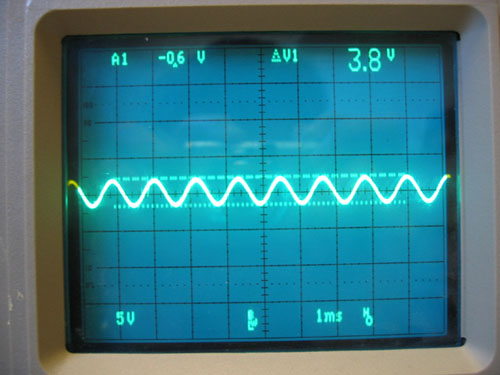Efficiency and precision are two of the most important considerations when using an oscilloscope. Engineers and technicians constantly seek tools that not only provide comprehensive insights into circuit behavior, but also streamline workflows for enhanced productivity. Among the arsenal of instruments available, Mixed Signal Oscilloscopes (MSOs) stand out among the rest as versatile solutions that marry analog and digital signal analysis. Let’s take a look at how the capabilities of MSOs allow the user to maximize workflow efficiency.
Understanding Mixed Signal Oscilloscopes (MSOs)
At its core, a Mixed Signal Oscilloscope is a specialized type of oscilloscope engineered to capture, display, and analyze both analog and digital signals simultaneously. Unlike traditional oscilloscopes that predominantly focus on analog waveforms, MSOs integrate digital channels alongside analog inputs, providing a holistic view of circuit performance.

Key Features of MSOs:
Simultaneous Analysis: MSOs facilitate the simultaneous analysis of analog and digital signals on a unified display, offering time-correlated insights into circuit behavior.
Advanced Triggering: Leveraging sophisticated triggering options, MSOs enable precise capture of specific events within mixed-signal environments, enhancing troubleshooting accuracy.
Bus Decoding: Many MSOs offer built-in bus decoding functionalities for standard protocols like I2C, SPI, and CAN, simplifying data interpretation and protocol analysis.
Streamlined Workflow: By consolidating oscilloscope and logic analyzer functionalities, MSOs optimize test setups and workflows, minimizing complexity and improving overall efficiency.
Maximizing Workflow with MSOs
Efficient utilization of MSOs entails adopting best practices across various stages of test and measurement processes, from preparation and setup to data acquisition and analysis.

To begin a testing procedure, it’s essential to define clear test objectives upfront. These objectives serve as a roadmap for probe selection, channel configuration, and triggering settings. When selecting probes, it’s crucial to opt for those that match the bandwidth and impedance requirements of the signals being analyzed. For high-frequency signals, active probes might be necessary. Channel configuration should be optimized by logically grouping analog and digital channels for better clarity.
Employing color coding and labeling can further enhance organization. Efficient triggering is vital for capturing relevant events accurately, making use of advanced triggering capabilities where available. Finally, to streamline analysis, pre-defining common measurements and cursors allows for quick access during the evaluation process.
Data Acquisition and Analysis
To enhance signal analysis capabilities, oscilloscopes offer various features that streamline the process. Cursors and markers serve as invaluable tools for measuring signal characteristics and highlighting points of interest within waveforms. Automatic measurements further expedite analysis, ensuring consistency across different waveforms while saving valuable time. By enabling bus decoding for standard protocols, data interpretation and analysis become simplified, enhancing overall efficiency.
Search tools and zoom functions enable users to swiftly locate specific events or anomalies within the captured data, facilitating detailed examination. Lastly, the oscilloscope’s memory is effectively utilized to capture and store relevant waveforms and data, ensuring that valuable information is retained for comprehensive analysis.
General Workflow Tips

Organize Your Workspace: Maintain a clutter-free and organized test setup to minimize distractions and errors.
Take Advantage of Automation: Utilize automation features for repetitive tasks, reducing manual intervention and potential errors.
Document Your Findings: Capture screenshots, notes, and measurements for future reference and reporting.
Stay Updated: Stay informed about the latest MSO features and functionalities to maximize their potential in test and measurement applications.
In the dynamic landscape of electronics testing and measurement, Mixed Signal Oscilloscopes emerge as indispensable tools for engineers and technicians seeking to unravel the complexities of circuits and wavelengths with precision and efficiency. By embracing the capabilities of MSOs and adhering to best practices in workflow optimization, professionals can elevate their testing and analysis endeavors to new heights of productivity and effectiveness. Incorporating these strategies into your test and measurement toolkit can help you to unlock the full potential of your Mixed Signal Oscilloscope!